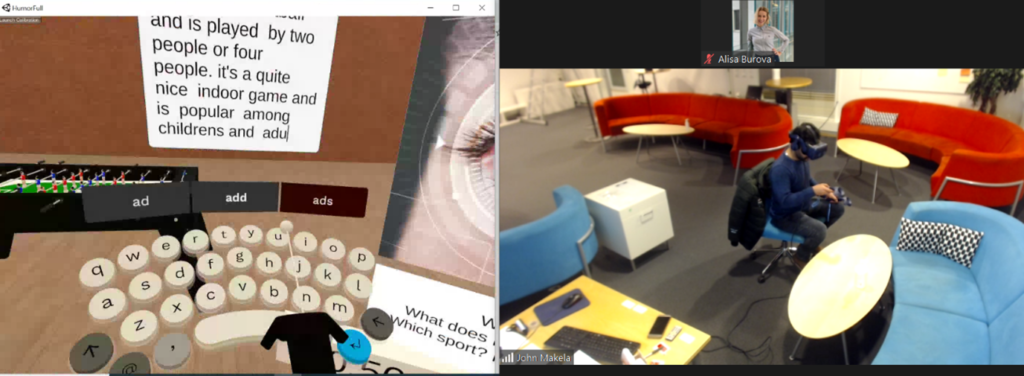
Nothing can stop us on the way to great discoveries! We redefined the meaning of remote experiments and proved that it is possible to run VR-related experiments while being socially isolated, from a comfort of own home.
When the COVID-19 pandemic boomed, we were strongly recommended to work from home, which negatively affected ongoing research activities. Experiments and other social gatherings were cancelled or postponed, making it nearly impossible to collect data. Especially, this is revenant to the research activities concerning VR, because wearing the headset is not considered a safe option, as it may spread the disease when used by multiple users.
Since the situation was not getting better, we decided to find an alternative way to conduct our research – remotely. Because our research includes expensive VR hardware with gaze tracking, we cannot just switch to “traditional remote experiments”, when participants join to the experiment from their homes.
So we came up with the reverse approach – we created and tested the experiment set-up, where the participants are located alone at the university premises, while the researcher is moderating the experiment from home.

What is the set up?
It appeared not to be hard at all. The moderator connected to the computer at the university via Remote Desktop connection; the instructions were given via Zoom. The procedure stated with an introductory video, which detailed all required information about the experiment. Then, the participants signed in the consent form, learned how to use controllers, and started the training process. Once they were confident with the given tasks, they completed the experiment in two parts and were interviewed.
Based on our experiences, we recommend to practice and pilot such set-ups multiple times – to understand the scope of possible errors and system crashes and be ready to recover from them remotely. Small details matter – and in this context, each small detail contributed to the overall successful procedure.
What do we study?
In this experiment, we investigated two different text entry methods in Virtual Reality: via speech and via typing on virtual keyboard. Both text entry methods were supported with a possibility to recover from recognition error or typos – in three different modalities: via speech command, touchpad click or via gaze selection. Therefore, this study would demonstrate the differences between two text entry methods and the most comfortable and efficient way to recover from errors. To deeper analyze all the combinations, gaze tracking data is collected during the procedure.
Currently, the experiment is on-going; 22 participants have participated in the experiment and shared their thoughts on text entry in VR, mostly representing students and staff of Tampere University. In comparison to our previous experiments, this number in a month is a pure success, which demonstrates the interest in VR technology among our students. The targeted number of participants is 30 and with a given interest in the topic, we plan to finalize the experiment by the end of March.
The results of the study will be published in a while – stay tuned 😊
Contact & more information:
Tampere University:
Dr. Markku Turunen, Professor of Interactive Technology
markku.turunen@tuni.fi
Leave a Reply